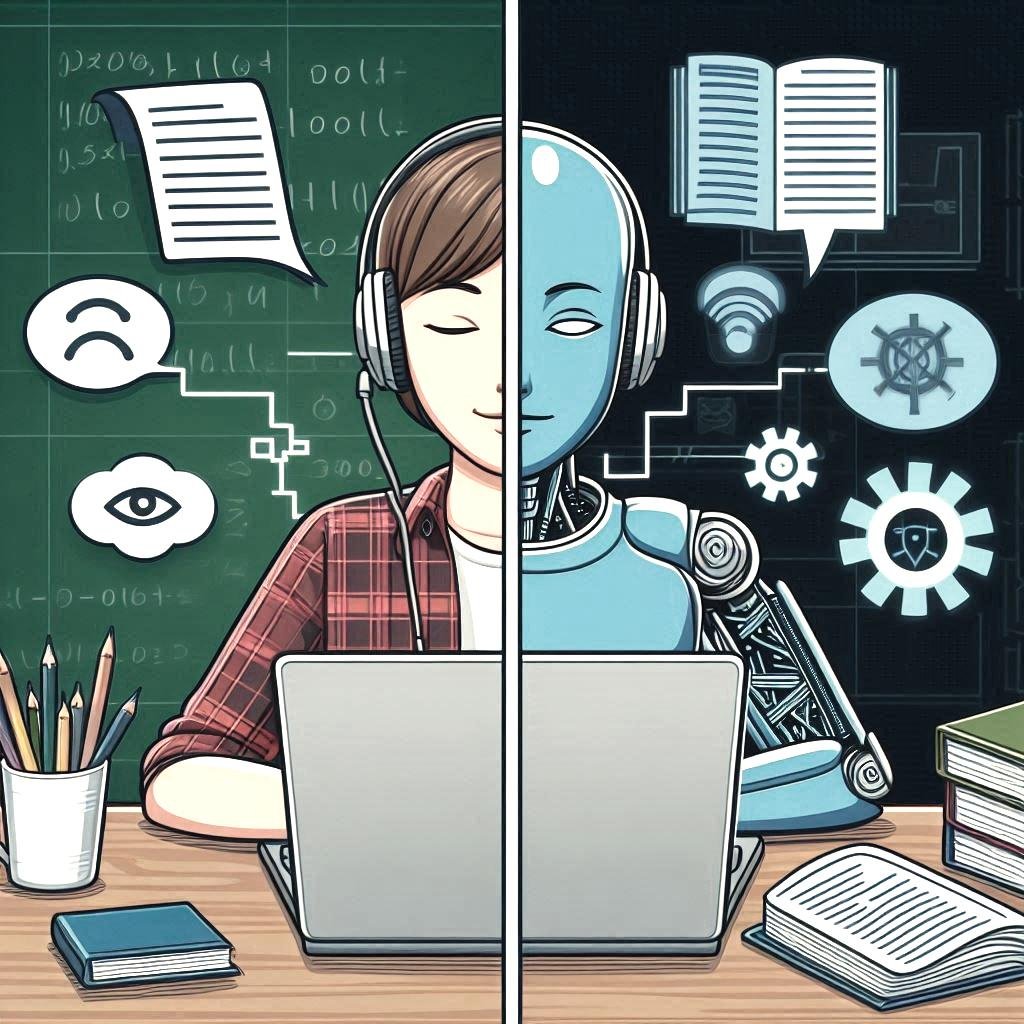The Double-Edged Sword of AI in Education and Work: Lessons from the Frontlines
As adjunct faculty, I get a front-row seat to the AI revolution in education and the workplace. What I've observed is both exciting and concerning, a paradox that we must navigate carefully as think about our future work.
Image Source: Bing
The Promise and Peril of AI
When I introduced AI tools to my graduate students, the results were initially impressive. I recommended they use AI for tasks ranging from light editing to brainstorming KPIs for a balanced scorecard. Students working with AI consistently outperformed their peers, producing work that was more creative, analytical, and polished. The AI-powered students were faster, and their output was sharper.
As the semester progressed, a predictable trend emerged. Some students began to over-rely on AI, simply pasting in assignment questions and accepting the AI's output without critical evaluation or editing. This behavior aligns with Dell'Acqua and Mollick's study on the Jagged Frontier, which suggests that as AI systems become more accurate, users tend to trust them implicitly, often neglecting to verify the information provided.
[Lesson: always, always, always challenge AI output.]
The Jagged Frontier of AI and Human Work
My (very) anecdotal experience supports the "Jagged Frontier" of AI and human work. As AI capabilities expand, the boundary between tasks best suited for humans and those for AI becomes increasingly complex and uneven.
Image Source: Bing
To navigate this frontier effectively, we must remain intentional about which tasks we delegate to AI, and why. The goal is to leverage AI's strengths while addressing our weaknesses and becoming more efficient without losing our critical thinking skills or creativity.
Case Study 2: The Financial Analysis Project
In a recent course, students were tasked with creating a balanced scorecard for a company. Some students used AI to generate initial KPI ideas but then engaged in analysis to refine and contextualize these metrics within their work environments. Their final report showed a deep understanding of the company's strategic goals. Others, in contrast, accepted the AI-generated KPIs with minimal scrutiny. While their reports initially looked comprehensive, they failed to align with the company's unique challenges and opportunities, ultimately impacting the reports’ relevance.
The Path Forward: Conscious AI Integration
To better practice with AI tools while avoiding their pitfalls, here is a framework for task categorization:
AI-Augmented Tasks: Use AI for initial brainstorming, data analysis, and draft generation.
Human-Centric Tasks: Reserve critical thinking, strategic decision-making, and ethical considerations for human judgment.
Collaborative Tasks: Combine AI efficiency with human insight for report writing and project planning tasks.
By consciously applying this framework, we can ensure that AI remains a tool that enhances our capabilities rather than a crutch that diminishes our skills.
Conclusion: Staying Awake at the Wheel
We must remain vigilant as we continue to integrate AI into our educational and professional lives. The danger of "falling asleep at the wheel" – becoming overly reliant on AI and losing our critical faculties – is very real. However, understanding the Jagged Frontier of AI capabilities and consciously choosing how we interact with these powerful tools can create a future where AI augments human intelligence rather than replaces it.
The key lies in continuous learning and remaining adaptive. As educators and professionals, we must not only teach the use of AI but also the metacognitive skills necessary to work alongside it effectively. Only then can we ensure that the AI wave we are riding enhances rather than diminishes human potential.


